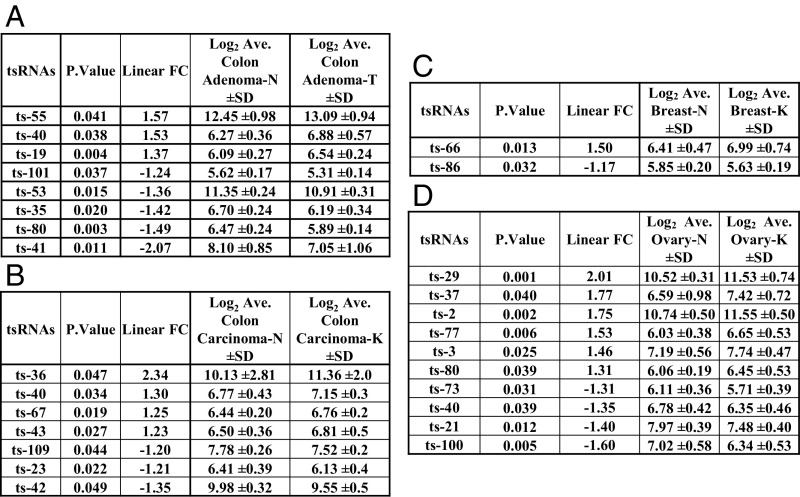Fig. 1.
tsRNA signatures in colon adenomas and adenocarcinomas, breast invasive ductal carcinoma, and ovary cancers. (A) Paired comparison between samples of colon adenomas and respective surrounding normal tissues from seven patients. We found a signature of eight tsRNAs. (B) Paired comparison between samples of colon carcinomas and respective surrounding normal tissues from eight patients. We found a signature of seven tsRNAs. (C) Paired comparison between breast cancer samples and respective surrounding normal tissues from nine patients. We found two dysregulate tsRNAs. (D) Unpaired comparison between ovary cancer samples from nine patients and normal ovary samples from ten different patients. We found a signature of 10 tsRNAs. All data were analyzed by applying normexp negative background correction, quantile data normalization, and moderated t-statistics for differential expression analysis. All tsRNAs considered are significantly differentially expressed (P < 0.05).

